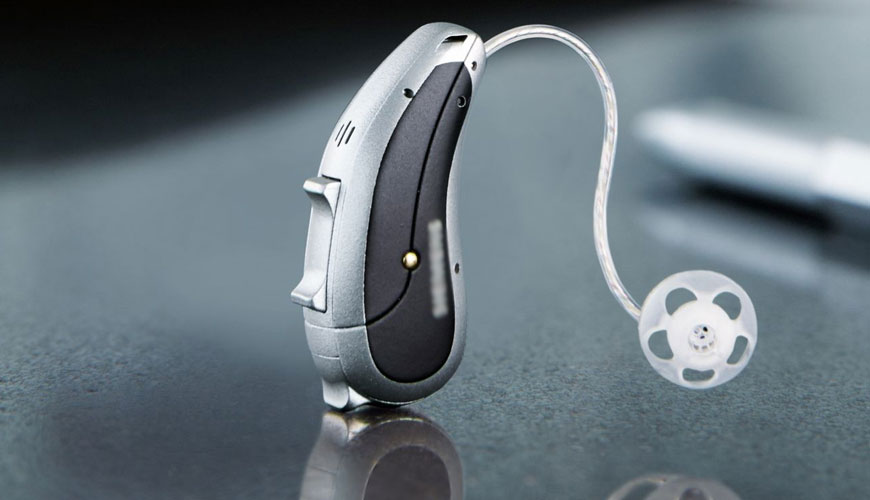

EUROLAB, with its state-of-the-art accredited laboratories and expert team, provides precise and fast testing services within the scope of IEC EN 60118-9 testing. IEC EN 60118-9 specifies methods for measuring bone conduction hearing aid properties. The methods described will provide a suitable basis for exchanging information or for direct comparison of the electroacoustic properties of bone conduction hearing aids.

These methods are chosen to be practical and reproducible and are based on the fixed parameters chosen. Results obtained by the methods specified in this standard refer to performance under measurement conditions; however, the performance of the hearing aid in practical use will depend on a number of factors.
This standard specifies methods for measuring the properties of bone conduction hearing aids for both transcutaneously coupled devices measured on a mechanical coupler, meeting the requirements of IEC EN 60318-6, and bone coupled/bone-anchored devices measured on a skull simulator.
IEC EN 60118-0 provides information on measurement methods for airway hearing aids. Most hearing aids used are of this type, but a small percentage use bone vibrators instead of earplugs. Using a bone vibrator requires a different method of measuring the output from the hearing aid and also makes it impractical to measure the amplification directly in terms of acoustic gain.
In the case of air conduction hearing aids, amplification is expressed as the difference between the output sound pressure level in an acoustic coupler or ear simulator and the input sound pressure level measured in a particular way. However, in bone conduction hearing aids, the input will be in terms of sound pressure level, but the output will be in terms of vibration force or mechanical vibration measured as force level.
Through the information provided in this standard, performance of hearing aids with bone vibrator outputs that do not form an integral part of the hearing aid, such as body-worn, behind-the-ear hearing aids or bone conduction implant systems with an external sound bone vibrator, air as described in IEC EN 60118-0 can be measured similarly to devices with transmission outputs.
Where the bone vibrator forms an integral part of the hearing aid or is permanently attached to the hearing aid, for example a bone anchored (bone anchored) hearing aid, its performance cannot be measured in the same way. This standard recommends a pressure method for controlling the input sound pressure level to the hearing aid microphone. As an alternative to the pressure method, storing a test cabinet frequency response correction curve can be used.
EUROLAB assists manufacturers with IEC EN 60118-9 test compliance. Our test experts, with their professional working mission and principles, provide you, our manufacturers and suppliers, the best service and controlled testing process in our laboratories. Thanks to these services, businesses receive more effective, high-performance and quality testing services and provide safe, fast and uninterrupted service to their customers.
To get an appointment, to get more detailed information or to request an evaluation, you can ask us to fill in our form and reach you.